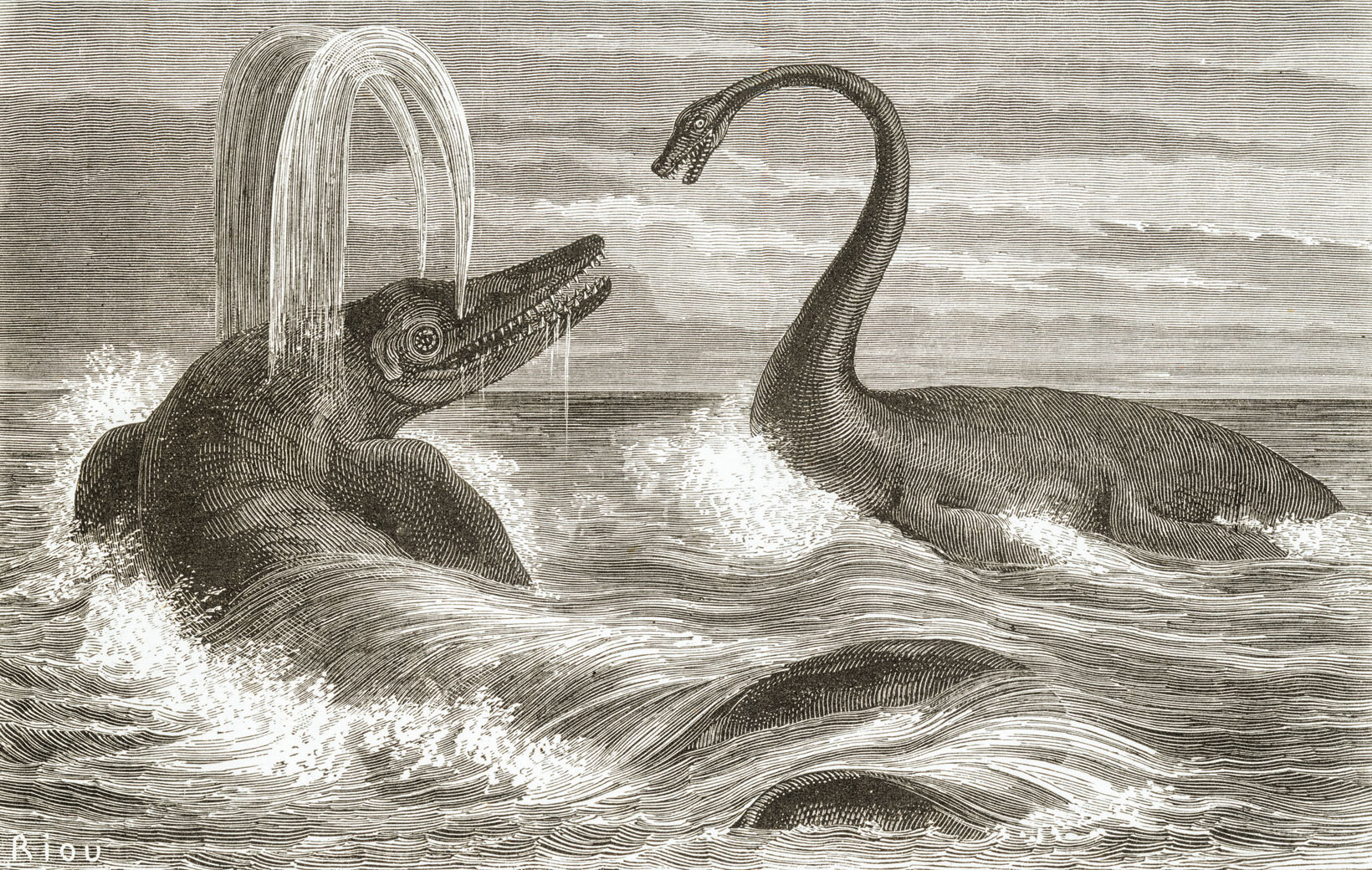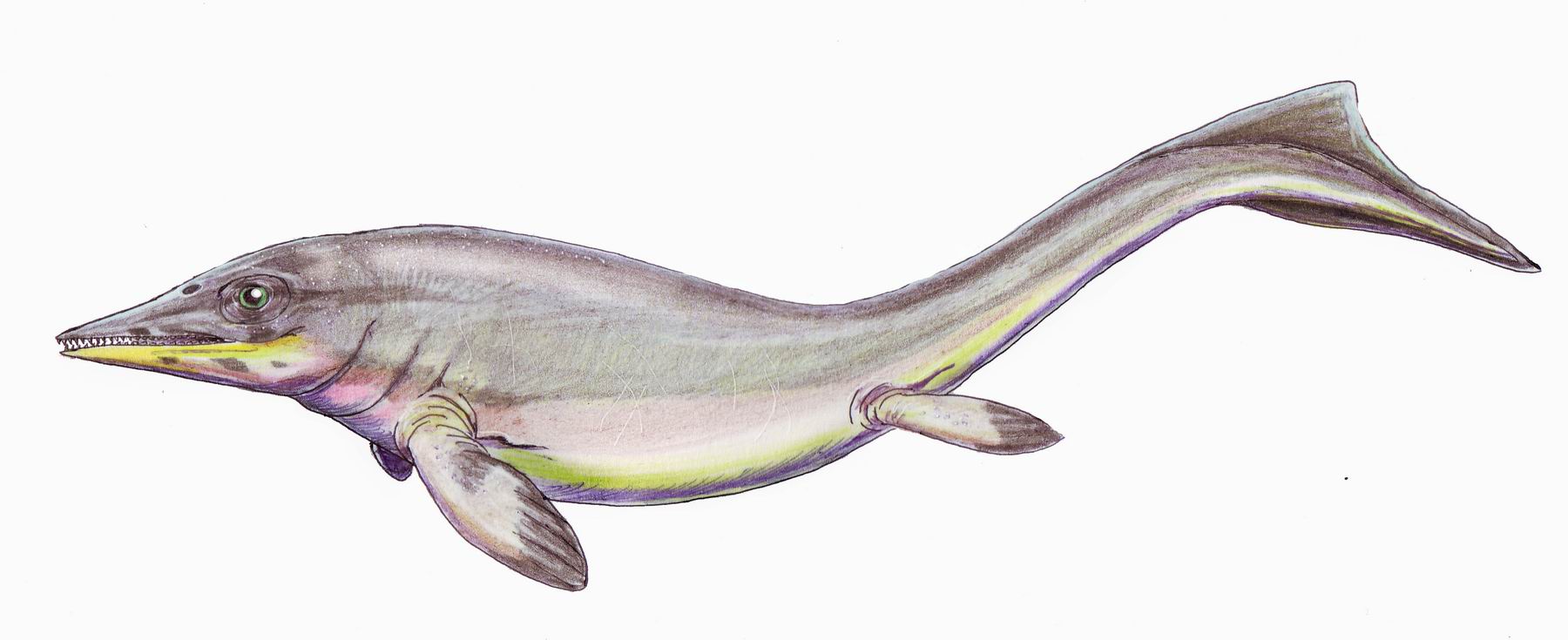|
Thalattoarchon Saurophagis
''Thalattoarchon'' is an extinct genus of ichthyosaur from the Middle Triassic of the western United States. The type species ''Thalattoarchon saurophagis'' (meaning "lizard-eating sovereign of the sea" in Greek language, Greek) was discovered in Nevada, USA, in 2010 and formally described in 2013. It is known from a single skeleton, holotype FMNH PR 3032, consisting of a partial skull, vertebral column, hip bones, and parts of the hind fins. The total length of ''Thalattoarchon'' is estimated to have been at least . ''Thalattoarchon'' is thought to have been one of the first marine macropredators capable of eating prey that was similar in size to itself, an ecological role that can be compared to that of modern orcas. ''Thalattoarchon'' lived four million years after the first appearance of ichthyosaurs in the Early Triassic and is therefore the oldest known marine reptile to have been an apex predator. It lived eight million years after the Permian-Triassic extinction event, indi ... [...More Info...] [...Related Items...] OR: [Wikipedia] [Google] [Baidu] |
Middle Triassic
In the geologic timescale, the Middle Triassic is the second of three epochs of the Triassic period or the middle of three series in which the Triassic system is divided in chronostratigraphy. The Middle Triassic spans the time between Ma and Ma (million years ago). It is preceded by the Early Triassic Epoch and followed by the Late Triassic Epoch. The Middle Triassic is divided into the Anisian and Ladinian ages or stages. Formerly the middle series in the Triassic was also known as Muschelkalk. This name is now only used for a specific unit of rock strata with approximately Middle Triassic age, found in western Europe. Middle Triassic fauna Following the Permian–Triassic extinction event, the most devastating of all mass-extinctions, life recovered slowly. In the Middle Triassic, many groups of organisms reached higher diversity again, such as the marine reptiles (e.g. ichthyosaurs, sauropterygians, thallatosaurs), ray-finned fish and many invertebrate groups like ... [...More Info...] [...Related Items...] OR: [Wikipedia] [Google] [Baidu] |
Himalayasaurus Tibetensis
''Himalayasaurus'' is an extinct genus of ichthyosaur from the Late Triassic Qulonggongba Formation of Tibet. The type species ''Himalayasaurus tibetensis'' was described in 1972 on the basis of fragmentary remains, including teeth, limb bones, and vertebrae.Z.-M. Dong. (1972). An ichthyosaur fossil from the Qomolangma Feng (Mt. Everest) region. ''Gu ji zhui dong wu yu gu ren lei yan jiu suo ji kan'' 9:7-10 The entire body length of ''Himalayasaurus'' is estimated to have been over in length. ''Himalayasaurus'' has since been considered a '' nomen dubium'' or "dubious name" because of the lack of features that set it apart from other ichthyosaurs, although the presence of distinct cutting edges on its teeth have more recently been proposed as a unique feature of the genus (cutting edges have also been found in the recently described ichthyosaur ''Thalattoarchon'' from the western United States). ''Himalayasaurus'' belongs to the family Shastasauridae, which includes other large- ... [...More Info...] [...Related Items...] OR: [Wikipedia] [Google] [Baidu] |
Californosaurus
''Californosaurus'' ('California lizard') is an extinct genus of ichthyosaur, an extinct marine reptile, from the Lower Hosselkus Limestone (Carnian, Late Triassic) of California. Taxonomy Merriam (1902) described it as a new species of ''Shastasaurus'', ''S. perrini''. He later recognized the species as generically distinct from the ''Shastasaurus'' type species, erecting '' Delphinosaurus'' for ''S. perrini''. However, ''Delphinosaurus'' had been previously used for an ophthalmosaurid from Albian-Cenomanian deposits in European Russia, and Kuhn (1934) provided the generic replacement name ''Californosaurus''. Merriam (1938) independently erected ''Perrinosaurus'' to replace ''Delphinosaurus'', but this is a junior objective synonym. Description The long-snouted head is small in comparison with the rest of the body, as in basal ichthyosaurs such as ''Mixosaurus'' and ''Cymbospondylus''. The tail is sharply turned downwards, in common with more advanced ichthyosaurs, with a sm ... [...More Info...] [...Related Items...] OR: [Wikipedia] [Google] [Baidu] |
Cymbospondylus Piscosus
''Cymbospondylus'' (a Greek word meaning "boat vertebrae") was a basal early ichthyosaur that lived between the early and middle Triassic period (249-237 million years ago). Previously, the genus was classified as a shastasaurid, but more recent work finds it to be more basal.Motani, R. 1999: Phylogeny of the Ichthyopterygia. Journal of Vertebrate Paleontology. 19 (3): 473 – 496 ''Cymbospondylus'' was a cosmopolitan genus found in Nevada, Europe ( Switzerland, Germanic Basin) and Spitsbergen. History ''Cymbospondylus'' was described from Nevada by Joseph Leidy in 1868 on the basis of several fragmentary vertebrae which he assigned to two different species: ''C. piscosus'' (the type species) and ''C. petrinus''. The University of California, under the direction of John Campbell Merriam and funded by Annie Alexander, conducted extensive fieldwork in the region in the late nineteenth and early twentieth century, following the description of ''Cymbospondylus'', recovering add ... [...More Info...] [...Related Items...] OR: [Wikipedia] [Google] [Baidu] |
Phalarodon Fraasi
''Phalarodon'' is an extinct genus of ichthyosaur. Its remains have been found in China, North America, and Spitsbergen. It measured between and weighed more than . See also * List of ichthyosaurs * Timeline of ichthyosaur research References Ichthyosaurs Extinct animals of Asia Extinct animals of Europe Triassic ichthyosaurs Ichthyosauromorph genera {{triassic-reptile-stub ... [...More Info...] [...Related Items...] OR: [Wikipedia] [Google] [Baidu] |
Phalarodon Atavus
''Contectopalatus'' was a primitive ichthyosaur, an extinct fish-like marine reptile from the Middle Triassic of Germany and China. It was originally named ''Ichthyosaurus atavus'' (Quenstedt, 1851/52), and later ''Mixosaurus ''Mixosaurus'' is an extinct genus of Middle Triassic ( Anisian to Ladinian, about 250-240 Mya) ichthyosaur. Its fossils have been found near the Italy– Switzerland border and in South China. The genus was named in 1887 by George H. Bau ... atavus'' (Quenstedt 1852). It was recognised as a valid genus by Maisch and Matzke in 1998, though other authorities argue that it is synonymous with ''Mixosaurus''. It was long and weighed . See also * List of ichthyosaurs * Timeline of ichthyosaur research References Middle Triassic ichthyosaurs Ichthyosaurs of Europe Ichthyosauromorph genera {{triassic-reptile-stub ... [...More Info...] [...Related Items...] OR: [Wikipedia] [Google] [Baidu] |
Mixosaurus Cornalianus
''Mixosaurus'' is an extinct genus of Middle Triassic (Anisian to Ladinian, about 250-240 Mya) ichthyosaur. Its fossils have been found near the Italy– Switzerland border and in South China. The genus was named in 1887 by George H. Baur. The name means "Mixed Lizard", and was chosen because it appears to have been a transitional form between the eel-shaped ichthyosaurs such as ''Cymbospondylus'' and the later dolphin-shaped ichthyosaurs, such as ''Ichthyosaurus''. Baur named ''Mixosaurus'' as a new genus because its forefin was sufficiently different from that of ''Ichthyosaurus''. ''Mixosaurus'' includes 3 species. Previously this number was bigger, and ''Mixosaurus'' was considered as the most common genus of Triassic ichthyosaurs, whose fossils have been found all over the world, including China, Timor, Indonesia, Italy, Spitsbergen, Svalbard, Canada, as well as Alaska and Nevada in the US. Description ''Mixosaurus'' was a small ichthyosaur, measuring between lon ... [...More Info...] [...Related Items...] OR: [Wikipedia] [Google] [Baidu] |
Ichthyosauria
Ichthyosaurs (Ancient Greek for "fish lizard" – and ) are large extinct marine reptiles. Ichthyosaurs belong to the order known as Ichthyosauria or Ichthyopterygia ('fish flippers' – a designation introduced by Sir Richard Owen in 1842, although the term is now used more for the parent clade of the Ichthyosauria). Ichthyosaurs thrived during much of the Mesozoic era; based on fossil evidence, they first appeared around 250 million years ago ( Ma) and at least one species survived until about 90 million years ago, into the Late Cretaceous. During the Early Triassic epoch, ichthyosaurs and other ichthyosauromorphs evolved from a group of unidentified land reptiles that returned to the sea, in a development similar to how the mammalian land-dwelling ancestors of modern-day dolphins and whales returned to the sea millions of years later, which they gradually came to resemble in a case of convergent evolution. Ichthyosaurs were particularly abundant in the Late Triassic a ... [...More Info...] [...Related Items...] OR: [Wikipedia] [Google] [Baidu] |
Chaohusaurus
''Chaohusaurus'' is an extinct genus of basal ichthyopterygian, depending on definition possibly ichthyosaur, from the Early Triassic of Chaohu and Yuanan, China. Discovery The type species ''Chaohusaurus geishanensis'' was named and described by Yang Zhongjian and Dong Zhiming in 1972, based on a fossil found during the construction of a railway. The generic name refers to lake Chao Hu. The specific name refers to the Geishan location. The holotype, IVPP V 4001, was uncovered in a layer of the Majianshan Limestone Formation dating from the Anisian. It consists of a partial skeleton, containing the skull and the front torso. In 1985 Chen Lizhu named two additional species based on fossils found in the same formation: ''Anhuisaurus chaoxianensis'' and ''Anhuisaurus faciles''. However, the generic name had already been preoccupied by the lizard '' Anhuisaurus'' Hou 1974. Therefore, ''Anhuisaurus'' Chen 1985 was in 1991 renamed into ''Chensaurus'' by Jean-Michel Mazin ... [...More Info...] [...Related Items...] OR: [Wikipedia] [Google] [Baidu] |
Grippia
''Grippia'' is a genus of early ichthyopterygian, an extinct group of reptiles that resembled dolphins. Its only species is ''Grippia longirostris''. It was a relatively small ichthyopterygian, measuring long and weighing . Fossil remains from Svalbard from the specimen SVT 203 were originally assigned to ''G. longirostris'' but are now thought to have belonged to a non-ichthyopterygian diapsid related to '' Helveticosaurus''. Discovery Fossils have been found along the coasts of Greenland, China, Japan, Norway, and Canada (Sulfur Mountain Formation); of Early Triassic age. No complete skeletons has ever been found. However, well-preserved remains have been found, with the most notable ones including: *The Marine Ironstone found in Agardh Bay Norway. This specimen consists of a partial skull fossil; however, it was lost during World War II and presumably destroyed. *Previously, the Vega Phroso Siltstone Member of the Sulphur Mountain Formation in British Columbia. This spe ... [...More Info...] [...Related Items...] OR: [Wikipedia] [Google] [Baidu] |
Utatsusaurus
''Utatsusaurus hataii'' is the earliest-known ichthyopterygian which lived in the Early Triassic period (c. 245–250 million years ago). It was nearly long with a slender body. The first specimen was found in Utatsu-cho (now part of Minamisanriku-cho), Miyagi Prefecture, Japan. It is the only described species in the genus ''Utatsusaurus'' and the only member of the family Utatsusauridae. The name ''Utatsusaurus'' was given after the city. The fossils have been found from the Early Triassic Osawa Formation of Miyagi Prefecture, Japan and British Columbia, Canada. ''Utatsusaurus'' is one of the most primitive grades of ichthyosaurs, a basal ichthyosaur. Description ''Utatsusaurus'' was a relatively small ichthyopterygian, measuring long and weighing . Unlike the more advanced ichthyosaurs, ''Utatsusaurus'' has no dorsal fin and has a broad skull. The snout gently tapers, compared to the more rounded one of more derived ichthyopterygians. The postorbital underlaps the elonga ... [...More Info...] [...Related Items...] OR: [Wikipedia] [Google] [Baidu] |
Parvinatator
''Parvinatator'', from Latin, “parvus” little and “natator” swimmer, is an extinct genus of small ichthyopterygian marine reptile that lived during the Early to Middle Triassic. Its fossils have been found in British Columbia, Canada.Nicholls, E. & Brinkman, D. (1995). A new ichthyosaur from the Triassic Sulphur Mountain formation of British Columbia. Sarjeant WAS (ed.): Vertebrate fossils and the evolution of scientific concepts: 521–535 London (Gordon & Breach). Geological information The only known Parvinatator fossil was located in an unknown horizon from the Sulfur Mountain Formation in a talus deposit, so its exact geological age is unknown. Best estimates place the fossil somewhere between the Olenekian and Ladinian age around 251-235 mya.Motani, R. (1999). Phylogeny of the Ichthyopterygia. Journal of Vertebrate Paleontology, 19:3, 473-496. Other small ichthyosaurs have been found nearby including Grippia, Utatsusaurus, and Phalarodon. Historical inf ... [...More Info...] [...Related Items...] OR: [Wikipedia] [Google] [Baidu] |







